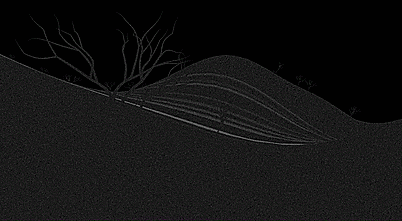"What it is like to be a bat" is a VR piece in which the viewer experiences being a bat. The viewer begins in darkness. To simulate echolocation, the viewer makes clicks (into the VR headset's microphone) which are then rendered as pulses of light. It is an attempt to both try to understand existing but inaccessible subjective experiences (i.e., those of bats) and to explore what completely new subjective experiences are made possible by VR.
Thomas Nagel's famous 1974 paper "What is it like to be a bat?" argues that inherent aspects of subjective experience mean that a human can never know the answer to that question. My proposed piece "What it is like to be a bat" is a response to this paper. Nagel is certainly right: even the experience of another person -- let alone that of a bat -- remains in some essential sense inaccessible to us. However, that does not mean we cannot try to understand other individuals' experiences. The thesis of this piece is that in the case of trying to understand the experience of a bat, technology can serve as a partial bridge between minds.
Technology: Three.JS, Simplex.noise, THREE.tree, Oculus Rift



